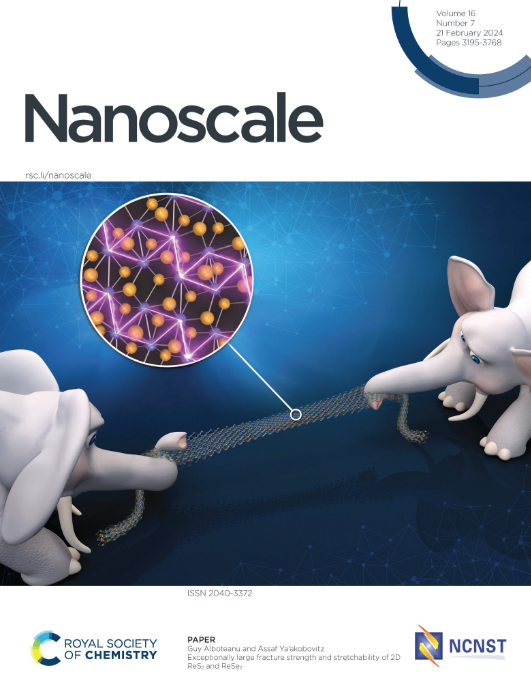DNA Origami-Templated Individual Gold Nanocluster: Probing The Photophysical Dynamics Using Single Molecule Fluorescence Spectroscopy
IF 5.8
3区 材料科学
Q1 CHEMISTRY, MULTIDISCIPLINARY
引用次数: 0
Abstract
Single-molecule fluorescence microscopy demands ultrahigh stability of single fluorophore with less photobleaching and essentially no intensity fluctuations on experimentally relevant time scales. In this respect, there is a need to design fluorescent probes with excellent photostability and long-lived dark transient states. Herein, we report the site-specific synthesis of gold nanocluster (Au NC) on DNA origami. Rectangular DNA origami bearing poly-cytosine sequence in the centre was used as a template to guide the in situ synthesis of Au NC. The photophysical properties of DNA-templated AuNCs were extensively studied using single-molecule confocal fluorescence microscopy, which revealed the average on-time and off-time of 0.08 seconds and 0.05 seconds, respectively. The photon antibunching measurements confirmed the existence of single Au NC in the confocal volume and fluorescence transient studies revealed excellent brightness and remarkable photostability with long survival times and less blinking. Such DNA-templated Au NCs with ultrahigh photostability, intense brightness, and low toxicity has tremendous potential to be used as probes in single-molecule dynamics measurements in biologically relevant timescales. The precise addressability of DNA origami nanostructures provides the controlled attachment of various biomolecules specifically at a predesigned location on the origami template, allowing such platforms to be used as single nanocatalysis as well as performing imaging and sensing studies on single molecule level.求助全文
约1分钟内获得全文
求助全文
来源期刊

Nanoscale
CHEMISTRY, MULTIDISCIPLINARY-NANOSCIENCE & NANOTECHNOLOGY
CiteScore
12.10
自引率
3.00%
发文量
1628
审稿时长
1.6 months
期刊介绍:
Nanoscale is a high-impact international journal, publishing high-quality research across nanoscience and nanotechnology. Nanoscale publishes a full mix of research articles on experimental and theoretical work, including reviews, communications, and full papers.Highly interdisciplinary, this journal appeals to scientists, researchers and professionals interested in nanoscience and nanotechnology, quantum materials and quantum technology, including the areas of physics, chemistry, biology, medicine, materials, energy/environment, information technology, detection science, healthcare and drug discovery, and electronics.
 求助内容:
求助内容: 应助结果提醒方式:
应助结果提醒方式:


